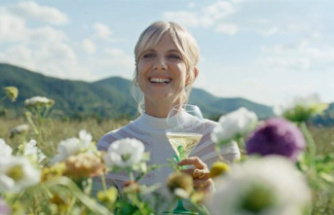Spring has sprung, but it is still pretty cool in much of North America and Europe, and people are still asking the question: Why do I feel chilly? We have looked at this before with engineer Robert Bean, but now Es Tresidder, who got his PhD and MSc studying “the optimisation of low-energy building designs using genetic algorithms” takes a stab at explaining it, sans genetic algorithms. He tweeted recently:
I've started what will hopefully be a regular blog on building physics for the non-expert. https://t.co/N0CpU0A8YV @BenAdamSmith #Passivhaus
— Es Tresidder (@EsTresidder) March 19, 2017And it is a very interesting blog indeed. Es is now a certified Passivhaus designer, teaches, and consults as Lean Green Consulting from the chilly Scottish Highlands, and points out that most people do not get it right because it is not just about the setting on the thermostat.
Models of thermal comfort are pretty well developed but are poorly understood by most people outside academia. I’ll focus in this post on feeling too cold, but broadly the same principles apply in reverse for overheating in the summer.
As Robert Bean noted in his discussion of the 166,000 thermal receptors on our bodies, it is all about feelings.
Whether we feel warm or cold depends on how fast our bodies are losing heat to the world around them. This depends on the air temperature in part; if the air next to our bodies, or on the outside of our clothing, is cold then we lose heat to it more quickly than if it is warm, but this is only part of the story. Let’s look at the other other factors affecting how fast we lose heat to our surroundings.
These include air movement; lots of it will make you feel colder because the warm layer of air next to your skin gets blown away. Cold walls and single glazed windows create drafts (he is in Scotland so writes draughts). Humidity is also an issue; cold air holds less moisture, and the drier the air, the more moisture evaporates from our skin. But the big one that most everybody misses when they buy their Nest thermostat:
We also lose heat through radiation, regardless of the air temperature, to the solid surfaces surrounding us. This radiative heat loss depends on the temperature of those surfaces and how close we are to them. The warmer they are the less heat we lose in this way, the colder they are the more heat we lose.
Es follows up with a more detailed look at radiative comfort that is quite technical and all in Metric U values instead of American R values so it is not easy to understand (U is the reciprocal of R values, and I have always thought it was designed to confuse consumers buying windows and hide the fact of how bad windows actually are at insulating)
But it does explain why my hundred year old brick house often feels cold, even with my fancy new furnace. It also explains why the traditional sizing of a furnace based on a heat loss calculation doesn’t work; You are simply not going to feel comfortable in winter next to a giant wall of glass. And yet that is what is done in every condo and most modern houses. It also once again points out a big benefit of the Passivhaus or Passive House standard:
Building, or retrofitting, to very [high efficiency] low energy standards raises internal surface temperatures in cold weather dramatically, and this makes them feel more comfortable both because of reduced radiant heat loss and reduced air movement. Passivehouse standard requires that surface temperatures never drop more than 4°C (7.2°F) below the air temperature, in addition to a host of other comfort requirements.
Es Tresidder’s blog is another great resource for learning about energy and heating, and is going on my virtual bookshelf next to Robert Bean’s Healthy Heating and Allison Bailes III, who explains it in his wonderfully titled Naked People Need Building Science.
Read also Es’s Motivations page, where he concludes:
Climate change poses a tremendous challenge to humanity; to stand a good chance of avoiding catastrophic levels of warming we need to decarbonise every area of our lives. The faster we can do this the better....Constructing new buildings and retrofitting old ones to the highest energy standards is a win-win-win situation. More comfortable homes, more productive work places, lower energy use and an easier transition to a zero-carbon energy system. This is what motivates me to always strive for better buildings.
Decarbonizing is critical; Energy saving is important, but comfort and productivity will get people moving.
Our editors found this article on this site using Google and regenerated it for our readers.













